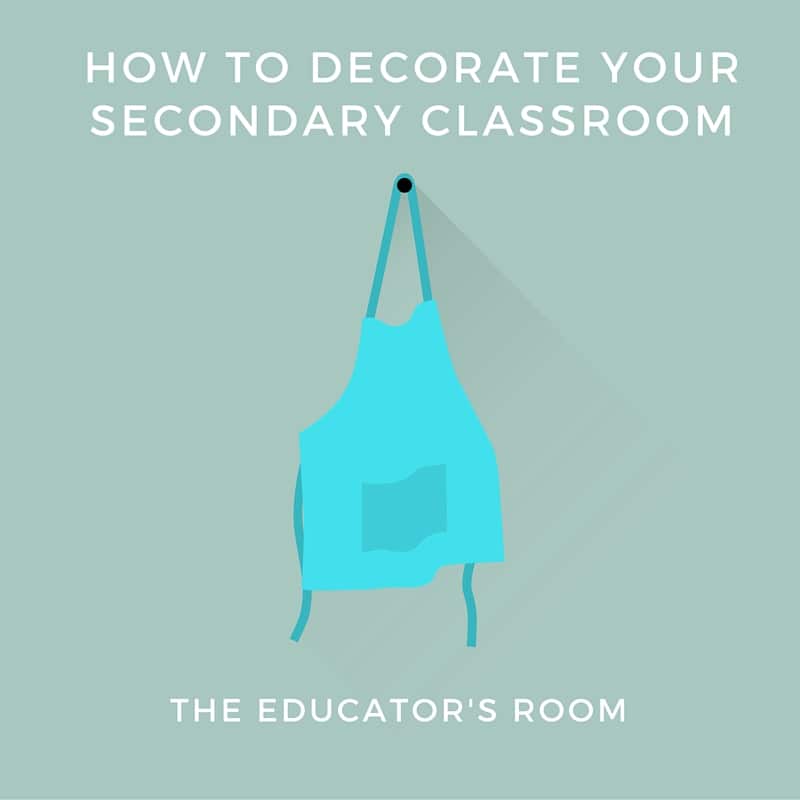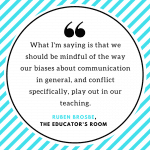At the end of last year, I changed positions. The difficult part of that was being expected to “replace” one of our best teachers in the entire district. Part of this involved his fun, learning-based classroom environment that he’d created over the 30-odd years of being there. I still remember one of my colleagues saying to me, “so what are you going to do with his classroom?” Here were the steps I took in revamping my now new home:
- See if you can get fresh paint or new carpet – I was lucky in that the district decided to remove the asbestos from a hallway that included my new room. In tearing the room asunder, they replaced the carpet, spackled the holes, and applied a fresh coat of new – albeit bland – paint.
- Ask if you can paint your room a different color – I’m a firm believer that the color of the room sets its tone. Our principal has been kind enough in the past to allow teachers to paint their rooms different colors. In fact, the custodians painted it in previous years! While our building is gutted over the 3 years, that’s obviously not going to happen, but I’m sure there’s a way to get a nicer paint color on my walls next year.
- Focus on the entry – The outside of your room should have some sort of appeal and practicality. First, with the former, a teacher should have his/her room number, name, and schedule placed outside the door. Next, there should be some fun or thought-provoking saying for the students to look at and define what their experience will be in the classroom (in the past I’ve used “There’s no ‘I’ in ‘team'” and “All those who enter promise to make a difference,” while this year I’m using a Chinese proverb, “Better to light a candle than to curse the darkness.”
- String inspirational and content-related quotes about your room – In the same token, you should accommodate the students’ wandering eye. I hate to remind you, but you will not have students’ attention 100% of the time. Don’t fight that current – give them something to think about. I string 140 quotes about my room (the actually serve as a border near the ceiling), and at the end of the year I ask students if they’d like quote to take home with them. Just about every student either points to their quote or runs immediately in the direction of it, and many students take photos of their quotes and email / Tweet them to me, even while in college.
- Find some fun, thought-provoking posters or create your own – In the same manner as above, find a way to help the students think when they don’t feel like paying attention to you for a few moments. The “Pass It On” posters provide a great free resource to put in your classroom, or you can go to Staples and have them create one for you. I read Sean Covey’s 7 Habits of Highly Effective Teens this summer and was just encapsulated by his description of how ducks work together in their “flying V,” so I turned that into a poster.
- Find posters that coach through the tricky and necessary stuff – I really push writing, so I have 2 posters in my room that help students map out their writing, while I have another that translates what my correction marks mean. My colleague in math has order of operations (who can ever forget PEMDAS?!), while our science teacher has the scientific method.
- Find a place to change with the current unit(s) of study – Everyone should have a bulletin board that includes vocabulary, objectives, pictures / portraits, and the name of the unit you’re currently studying.
- Homework board – While students have had fun with me over the years in changing the name of my “homework bored,” I’m a firm believer that homework should be presented in a written form at all times. Even if it’s available on the teacher’s website, seeing the homework written down helps. I’ve adjusted and written-out the homework for the entire week now, and I have the students copy it in their agenda on Monday.
- Homework station – in the same token, there should be a place where students who’ve missed the previous class can go and find the materials they missed without even asking. Elementary teachers may need to put their name on it, but in secondary we can usually just put the pile of papers in a spot labeled for either the class (“Biology – 3rd period”) or for the day missed (“Monday”).
- Bookshelves crammed with books – I hate to continually remind my colleagues of this, but we’re at a crux where students aren’t reading on a regular basis. We need to fight that tide and make quality readers, and one way to do that is to have a book jammed with inexpensive, interesting books. They should be tethered to your subject area, but they don’t have to be. You can make an honors system sign out book, but if they don’t come back, it’s not a big deal. You helped interest a student in reading a book – on their own.
- Art & paper supplies – It might seem almost too obvious, but if you can afford it or have your school pay for it, go and find a paper sorter at Office Depot (that’s where they’re cheapest) and some small bins to toss in some crayons, markers, colored pencils, glue sticks, and scissors. Middle and high schoolers might pretend to be all high-and-mighty, but they’re not above acting like a kid sometime. Toss a group of seniors some Play-Doh and tell them to make a sculpture related to “Hamlet,” and you’ll see what I mean.
- Fun things from over the years – Every time I travel, I try to get something small. I hang these items from my desk, and students have since hopped on board. I love just taking a moment every once in a while and checking out exactly what I have as part of my 8 year collection.
- Something personal – I’m a huge Philadelphia Phillies fan, and if students don’t bring in something from their travels, they’ll often buy me a Phillies trinket as a gift. I’ve turned it into what students call my “shrine.” It really riles up the Mets, Yankees, Nationals, and Pirates fans.
- Your degrees and awards – Hell, you walk into a doctor’s office and they have all their degrees hanging on the walls, why shouldn’t you? If we’re going to win the battle over being a professional, then we have to show the world that we are nothing short of professionals. I wear a tie and dress pants to work every day, too, and when I earn my PhD, it’s going to hang on the wall that has my awards and certificates, too.
- Photos of previous students – I have pictures of some of my award-winning students, top students, troubled students, and students who’ve died since having me in class. It helps keep things in perspective.
- Photos of family – Because there’s only a few things more important than our jobs, and this is one of them.
- Something that no student will ever forget – Since I teach early American history, I’ve decided to buy as many flags as I could from early American roots. So I’ve now collected 14 flags, from the red British Ensign to the flag flown during the Civil War, students will never forget these hanging from my rafters.
- Allow your room to evolve – Hardly any of these ideas hatched on my own volition. They generated themselves in my head while on the final mile of a morning run, from something I found at a yard sale, or from some student saying, “you know what would be cool?” Here’s to you making your room a bit more “you.”







Leave a comment